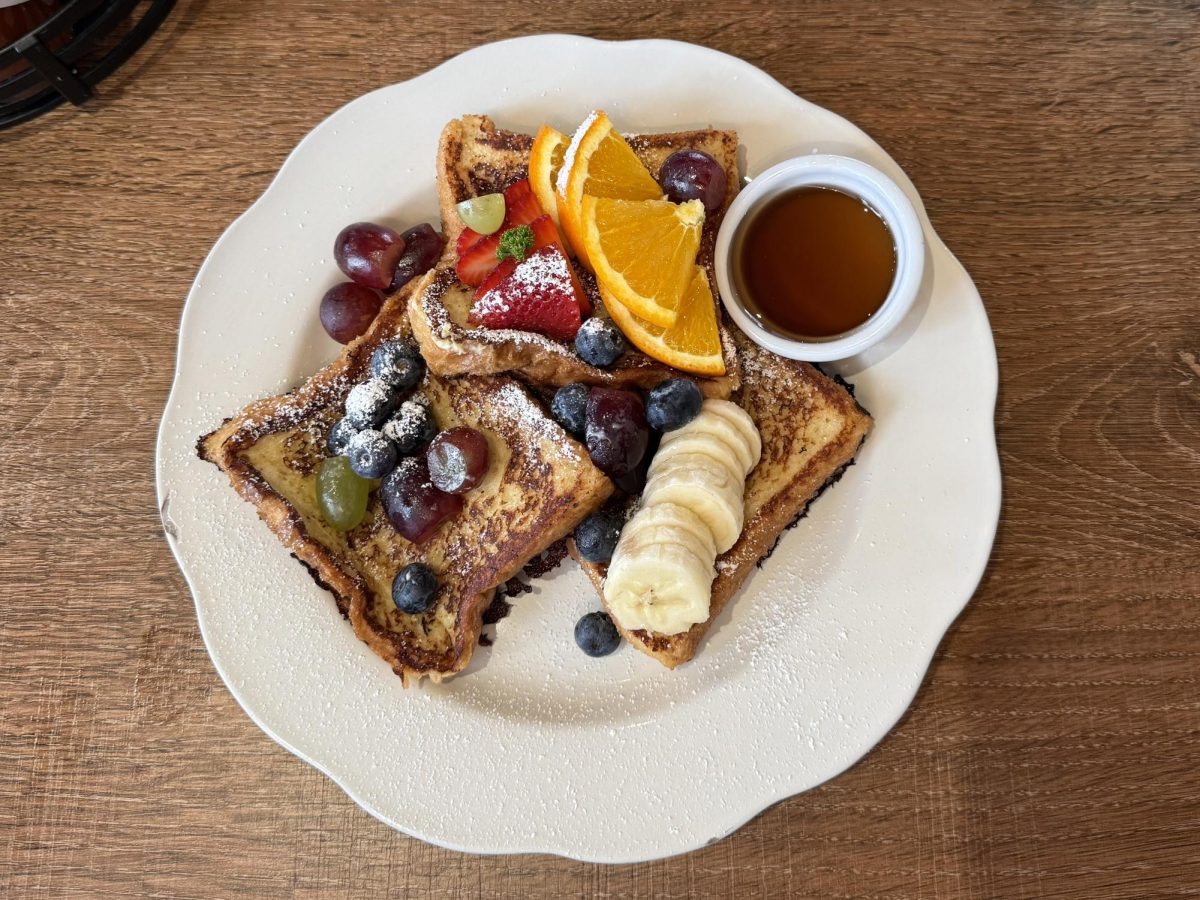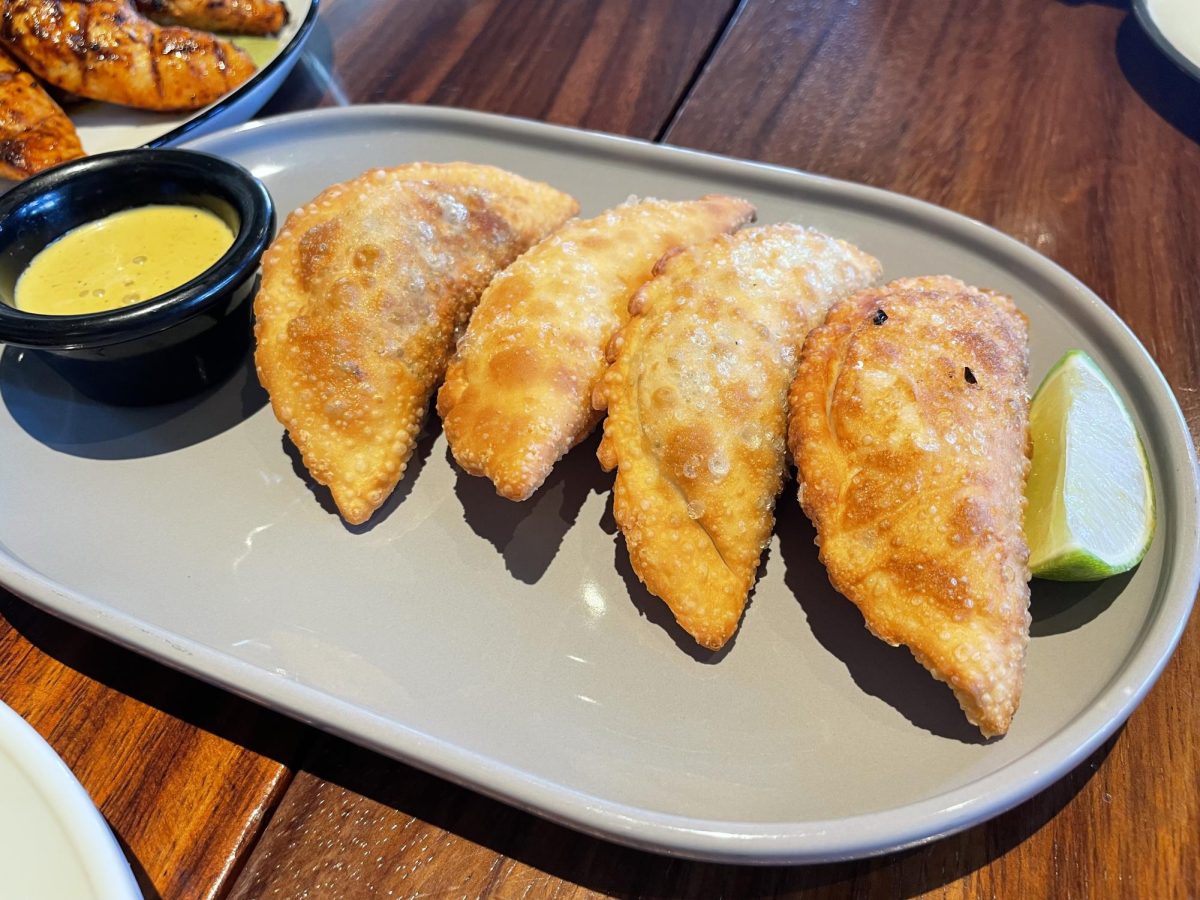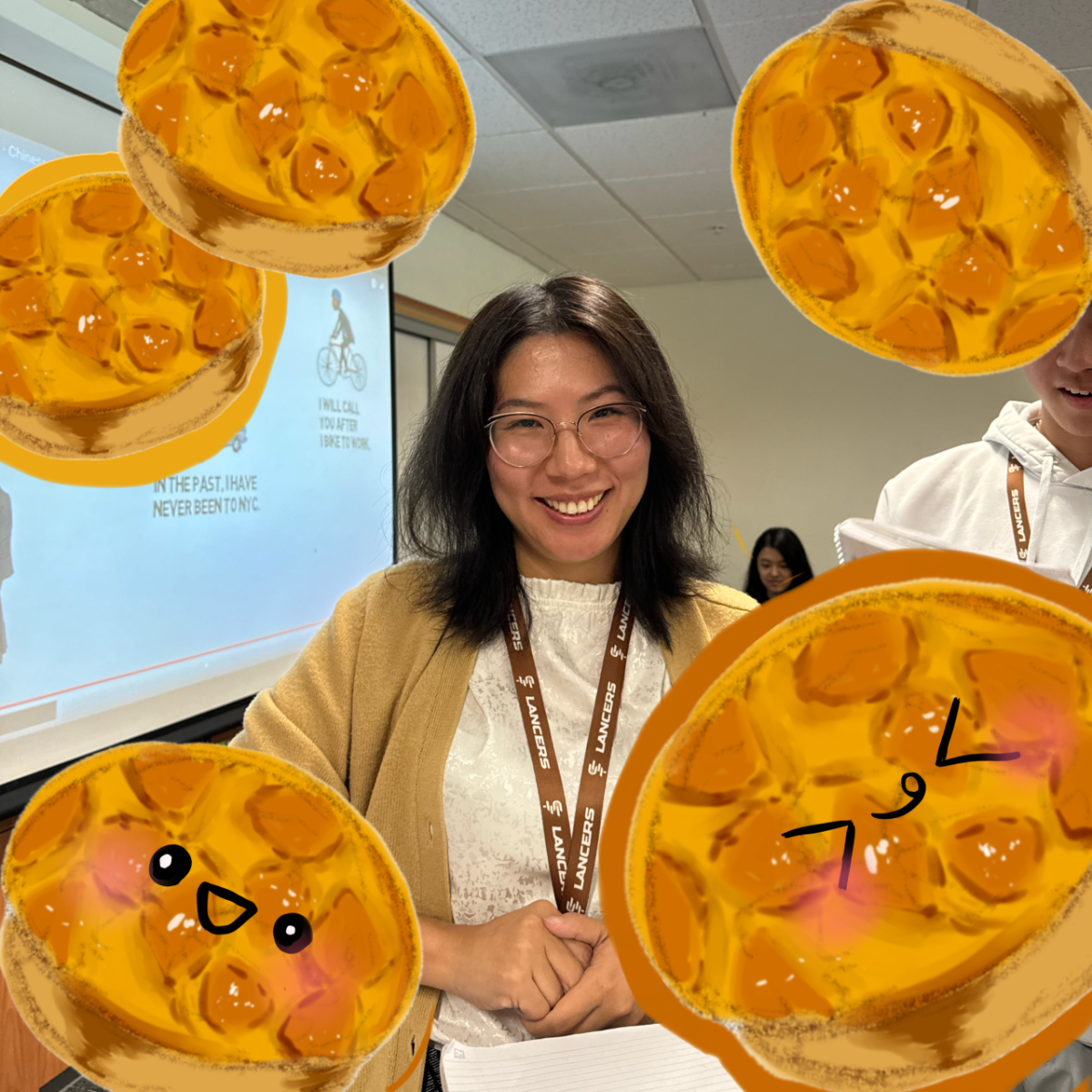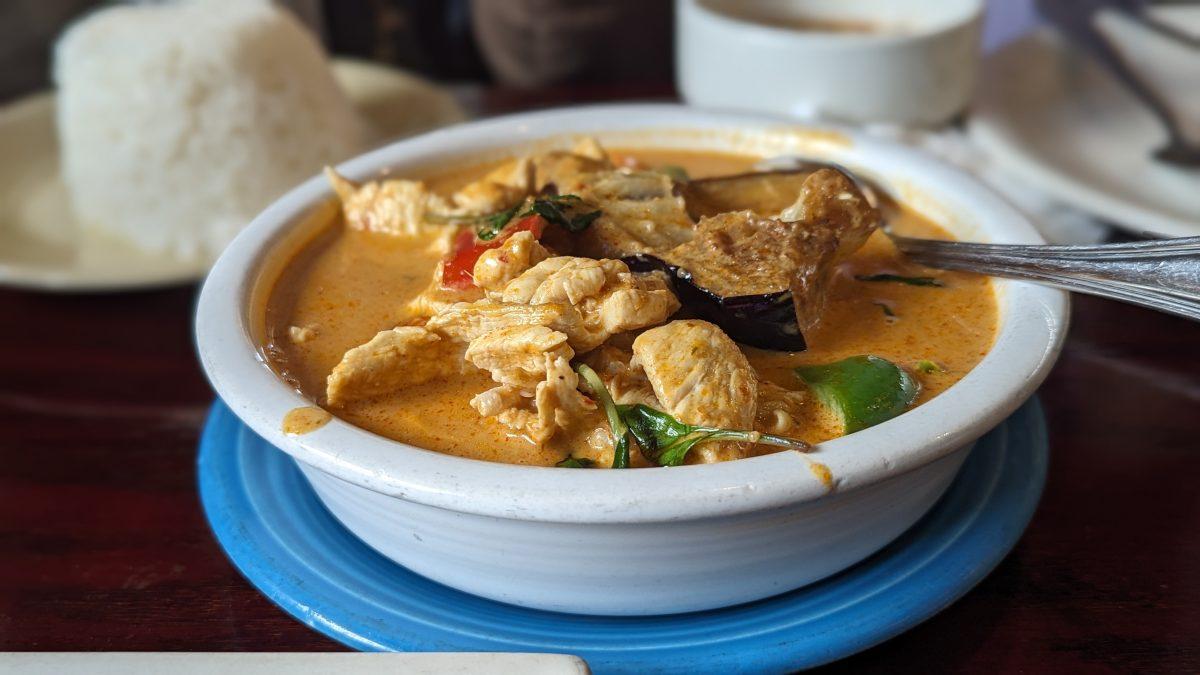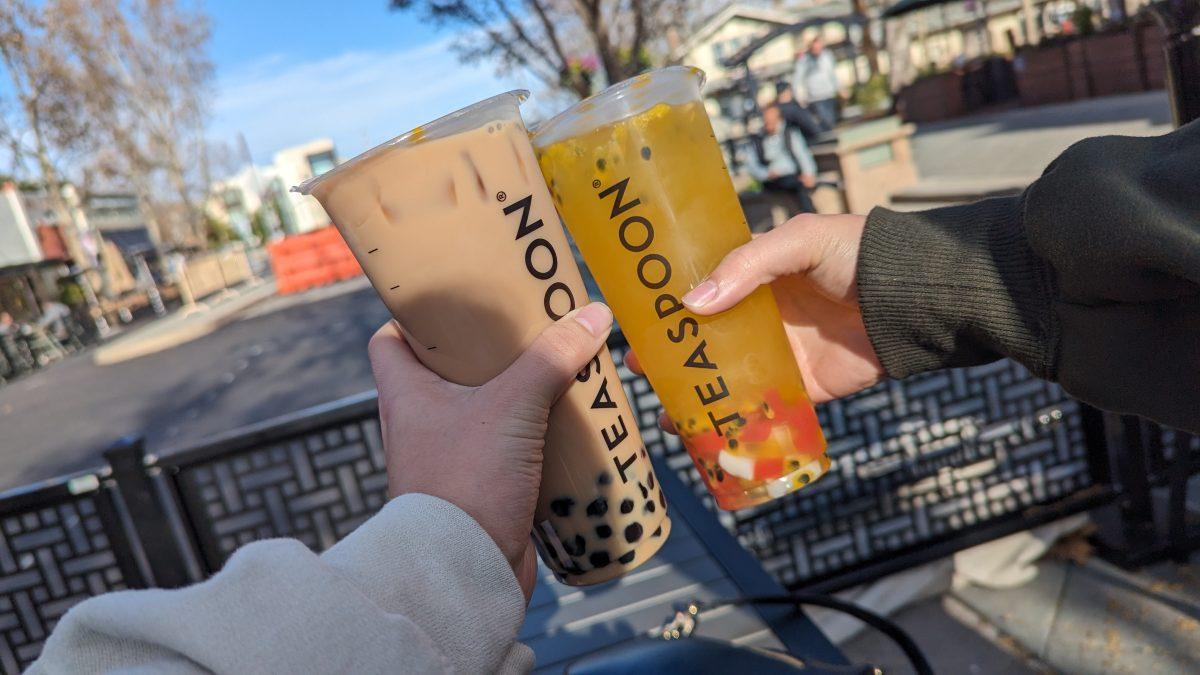Centered on Castro Street for over twenty years, Amarin Thai is a go-to restaurant if you’re craving comfort Thai food. Its warm interior features walls adorned with traditional Thai statues, ornate golden frames, and top-to-bottom mirrors that give the illusion of a larger space. As we walked in, we observed a Khan Toke setup—a Northern Thai custom featuring low tables and decorative floor cushions. Since those seats are generally reserved for larger parties and on request, we were seated in the main seating area. Because one of our columnists is allergic to peanuts and another is allergic to shellfish, we expected our options might be limited. However, the waitress was very understanding and accommodated our dietary restrictions for every dish. As always, we decided on four different dishes: an appetizer, a soup, a curry, and a noodle dish. Overall, we found that Amarin Thai provided not only delicious dishes, but also an affordable and inclusive menu to those with dietary restrictions.
Roti (8.5/10)
The first dish we tried was roti, a type of flatbread that originated in India, where it is usually made with whole wheat flour and water. Thai roti, however, is a variation of the flatbread that adds eggs, flour, butter, and sugar, resulting in a flaky, sweeter bread.
While it was a little too oily, this roti was cooked to perfection—crisp and golden-brown on the outside with soft, chewy layers in the middle. The bread was served with a small bowl of yellow curry for dipping. The warm spices of the curry sauce contrasted nicely with the subtle sweetness of the roti.
Tom Yum (9.25/10)
Tom Yum, also known as hot and sour soup, is a Thai staple. The origins of this dish are disputed, but most people believe that it came from Central Thailand. Traditionally made with the freshwater shrimp commonly found in the Chao Phraya River, the soup has evolved over time to incorporate different herbs and use proteins other than shrimp.
Out of all the dishes we tried, this one was by far our favorite. The chicken was a little tough, but the flavor of the soup made up for it. The fragrant combination of lemongrass, lime leaves, and other herbs with a hint of spice complemented the bright, citrusy broth, making for a light, refreshing dish.
Red Curry (7/10)
Originating in Central Thailand, red curry is known for its distinctive red hue due to the curry’s red chili paste base. Aside from being an iconic Thai dish, red curry highlights the many multicultural influences in Thai cuisine, including Indian spices, American peanuts, and much more. At its core, the dish consists of native Thai spices, vegetables, and a spicy red sauce that is served with rice.
Unfortunately, this restaurant’s rendition of red curry was not our favorite. The coconut milk overwhelmed the spicy curry sauce, making the flavor overly sweet, and although the curry was very rich, the eggplant inside failed to absorb the sauce’s flavor. However, we did enjoy how the thick curry paired well with the warm rice, which helped balance out the sweetness.
Pad Thai (7.6/10)
Perhaps the most famous Thai dish in the western world, Pad Thai is a spicy rice noodle dish originating in 20th century Thailand. The noodle dish spread quickly during World War II due to a lack of rice and remains a common street food throughout the country. Pad Thai usually includes stir-fried proteins, scrambled eggs, and bean sprouts, and is complemented by sour tamarind paste and fragrant fish sauce.
We loved the sweet-and-sour combination of flavors in the Pad Thai sauce. Layers of tart sauce, savory meat, and aromatic herbs came together to create a complex and unique combination of flavors. Our dish came with pork and an assortment of raw vegetables on the side, which we appreciated for their textural contrast. Overall, this dish was pretty solid, but it wasn’t anything extremely special.

























